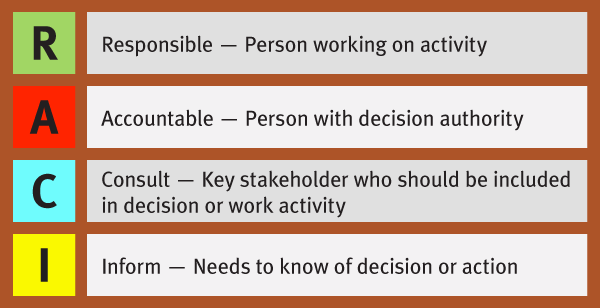Your accounts payable department is responsible for vendor invoice processing, approval, and payment. Within these functions, there are several different workflows, and to manage these workflows effectively, you need to be equipped with practical ideas. This guide contains some nuggets of wisdom to help you manage your accounts payable workflows for better performance, increased operational efficiency, and a better bottom line.
Workflow management involves managing related tasks necessary to complete an operation from initiation to completion. Its basic activities include planning, execution, testing, tracking, optimization, and reporting.
To be effective at it, you will need to manage all facets of the workflow, including documentation, time, human resources, assignments, and so on. The aim should be to help your team collaborate effectively and work together to accomplish your AP goals.
As a workflow manager, here are some tips to help you guide your accounts payable team and move your work forward.
1. Start early.

Starting an invoice approval process early gives you time to work on it attentively, without rushing. This saves you from data entry errors and other mistakes caused by working too quickly, which ultimately result in wasting time and money.
Tell your team to get an early start. When an invoice arrives, match and push it into the system for processing. When you start processing an invoice early, you will finish early, ensuring you avoid late payment penalties while being more eligible for early payment discounts. Your team members will have more time to put into other valuable tasks.
2. Get your workers to be focused.

There are lots of distractions in the workplace that contribute to the loss of valuable work hours. In 2015, it was reported that chatty colleagues, mobile phone notifications, and other workplace distractions lead to the average worker wasting 759 hours every year.
An effective workflow management system requires getting yourself and your team members to focus entirely on the task at hand. This not only boosts productivity, but also saves costs, as you’ll have more serious workers who do not waste time on trivial activities.
3. Keep the communication lines open.

Effective communication is the key to successful collaboration. Without it, processes will get stuck and tasks will fall through the cracks. Create a channel through which a process’s participants can keep in touch with each other, share ideas, and give and receive feedback.
A proper communication channel ensures that everyone on your team has the information necessary to make decisions and proceed with their part of the workflow; it keeps everyone on the same page. Workflow automation software will provide you with this type of communication channel out of the box.
Communication should be clear, consistent, and honest. It should flow freely and help your participants identify deviations from the plan and adapt to them in a timely manner.
4. Don’t forget the human factor.

Tasks are performed by people. If you can manage these people well, they will manage their processes well too. Research shows that a high number of non-management employees are often unengaged, not working at their full productive capacity.
Know the strengths and limitations of the people on your team, and delegate work to them intelligently. Motivate them to perform productively and consistently. Create a work culture in which employees put work first and are loyal to the company.
Managing your people can seem daunting, but it doesn’t have to be if you approach it with the right attitude.
5. Apply the 5W1H approach.

The 5W1H approach is an analytical strategy in which you use six questions — who, what, when, why, where, and how — to analyze a subject or process for assessment, reporting, and visibility.
In managing your accounts payable workflows effectively, you need to maintain an adequate level of transparency and visibility. Visibility is important for being able to control workflows, make rule changes, monitor progress, and get your people to perform. The 5W1H analysis can help you achieve this visibility.
With it, you’ll get to know who is doing what, where they are doing it, why they are doing it, when they are expected to finish, and how they are going about it.
6. Adopt the RACI model.

In addition to the 5W1H approach, you also ought to use the RACI model.
This model is a formula used in identifying and defining an organization’s roles and responsibilities. It helps you clarify the following:
R- Who is Responsible to do the work
A- Who is Accountable for final decisions and ultimate ownership
C- Who is Consulted before a decision or action is taken
I- Who is Informed that a decision has been made or action has been taken
Once you have determined these roles and responsibilities, match them up with processes for clarity and hierarchy.
7. Follow the KISS principle.

The KISS principle — Keep It Simple, Stupid — is yet another strategy you ought to adopt. It states that the best systems and processes are those that are kept simple, short, and straightforward.
This is one of the biggest benefits of workflow management software — it simplifies your invoice processes. A workflow management tool also makes it possible to determine whether processes contain more steps than necessary, or take more time to complete.
Use an accounts payable workflow automation tool to identify and remove bottlenecks, and to control the scope of your AP workflows.
8. Encourage your team to share ideas.

Often times, one person won’t have all the answers, experience or skills needed to complete a piece of work. In these situations, it needs to be okay to ask for help from fellow colleagues.This is a fundamental part of teamwork, and it’s necessary for performing effectively. It’ll also help your team to learn new things and work more intelligently. Think of it as an ongoing process that can shape your team into an impeccable workforce.
9. Review records for optimization.

Effective workflow management relies on being able to review and evaluate the way tasks were previously performed, and on making improvements based on your findings. Each workflow can be a valuable learning tool, and you can use the lessons learned to minimize future failures.
To be able to review past projects, you will need to always keep records of past work. Reviewing these records from a decision-making perspective, either individually or collectively, can help you manage future processes more efficiently.
By using a workflow management software like Pyrus, you’d be able to automatically archive or cache previous workflows. A workflow management tool will also make it easy and fast to search for any past project you might want to examine and learn from.
9. Cross off finished items.

Crossing off a completed task from your to-do list gives a great feeling of accomplishment. This is of course popular at the individual level, but can also work well for teams.
Why? Because team tasks are typically complex. Crossing off completed tasks or simply checking a box in a complex context gives even a greater feeling of satisfaction and shows that there’s less to be done.
Seeing too many tasks at once feels daunting. It discourages completion and numbs the mind. When tasks aren’t relevant or current, they need to be removed from your list so that your team can focus on the tasks that are most important. This is why Pyrus lets you mark off items as “Done” when they are completed.
10. Batch similar tasks together.

If your workflow involves performing lots of related tasks, group them together and do them all at once.
This lets your mind flow sequentially. Different tasks require you to think differently, so it makes sense to allow your mind to continue to flow in its present zone while performing those related tasks. It’s better than switching unnecessarily to something that’s going to need you to reorient your work and thinking.
For example, if you have a group of invoices to process, you can first sort them consecutively before proceeding to other steps in the approval process.
11. Delegate tasks to people with the most pertinent experience to complete them.

In delegating tasks, it matters who does what. If you want the best performance from your employees, mostly assign them with tasks they are experienced or skilled in. This way, they will put their best abilities to work, which will ultimately add significantly to your AP department’s overall success.
12. Manage risks intelligently.

Whether you like it or not, risk is always present in a work environment. It’s best to prepare yourself and your team to manage these risks in an intelligent manner. In fact, proper risk management is an essential skill for running successful projects.
Risks can occur at any point along the invoice approval process. You should keep an eye out for when risks are imminent in order to avoid them, and if they occur, you should be able to use your past experience in similar situations to know the appropriate action to take.
13. Know the status of a particular workflow.

Knowing the present status of a workflow is important for effective control and management. Generally, a workflow status can be in described by the following stages:
- Ready
- Assigned
- Closed
- Expired
- Forwarded
- Failed
- Completed
15. Leverage technology.

If you’re not using technology to streamline and optimize your business processes in today’s world, then your system is outdated. Technology not only helps you manage processes and workflows, but also your employees and documentation.
The right technology can significantly cut costs while saving you from unnecessary headaches. For example, using workflow automation software, you’ll be able to bypass many of the tedious tasks that are associated with manual operation. You’ll avoid errors and process invoices more quickly.
We have a super-helpful workflow technology right here. Pyrus is designed specifically for accounts payable related work and other business processes. Pyrus combines workflow automation, request tracking, work communication, and document approvals into a single interface. You can configure it without any coding knowledge and integrate it with your favorite business tools, like your supply chain management tool, customer relationship management software, and enterprise resource planning system. Pyrus works both online and offline and it’s free. Start using Pyrus today by requesting for a demo through the form below.




